To begin you need:
- A pair of 4mm knitting needles (US size 6 or UK size 8)
- DK knitting yarn
- A tapestry needle
- A pair of scissors

For some of the squares later on you are going to need:
- DK knitting yarn in more than one colour
- Stitch markers or short pieces of yarn tied into a loop
- A 4mm (US size 6 or UK size 8) circular needle 40cm (16in) long
- A set of 5 double pointed needles 4mm (US size 6 or UK size 8)
- A cable needle
- A 5mm (US size H-8) crochet hook, to assemble the squares

I would also recommend:
- A cup of tea ☕️ or other drink or beverage (to stay hydrated!)
- Good lighting💡
- Good music 🎶
Nice to have but not strictly necessary for the current project:
- Kitchen scales (to weigh the yarn)
- A tape measure
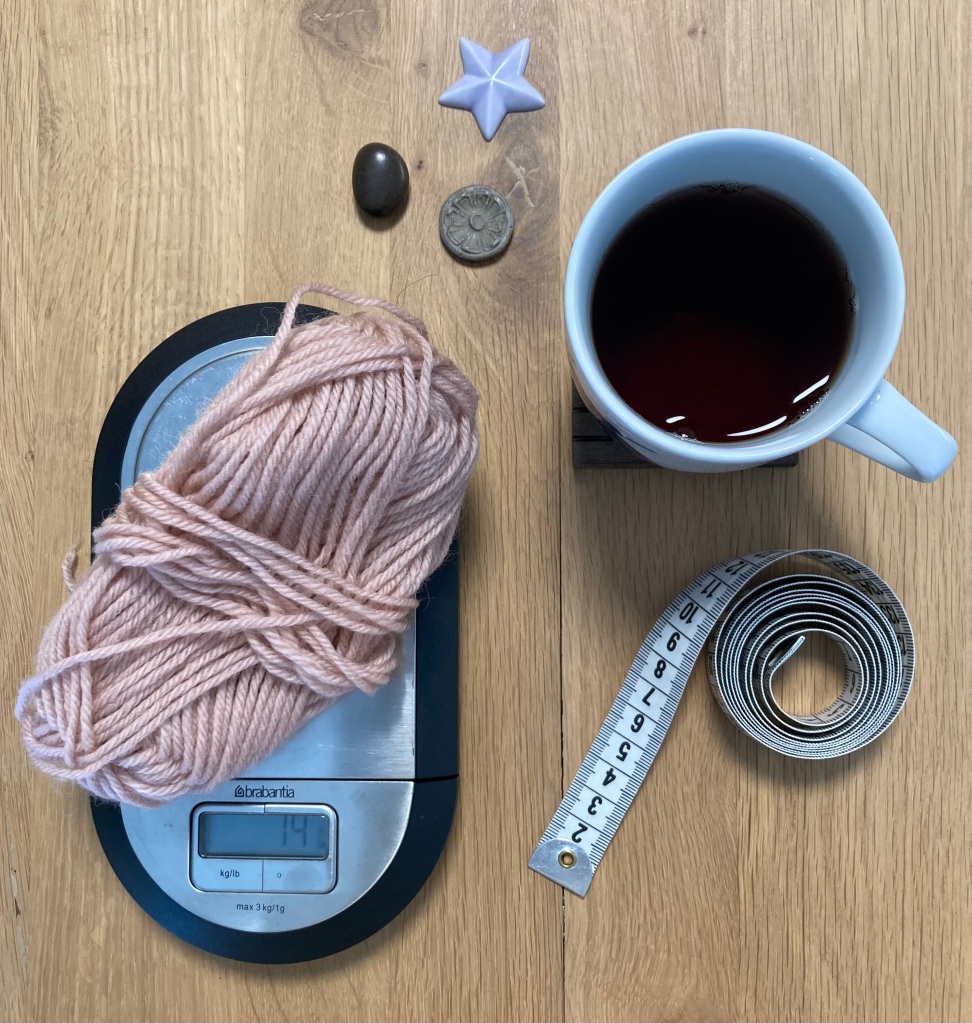
More specifically:
Needles
I suggest you start with 4mm (US size 6 or UK size 8) needles. They are neither too thin nor too heavy. If you do choose another size, you will also need to choose your yarn accordingly.
Needles are made of a variety of materials: Wood, plastic, bamboo or metal.
I am not particularly choosy – I will knit with almost any kind of needles – however, these are things I would look out for:
- Wooden or bamboo needles are pleasant to the touch and lighter than metal, so they are a favourite, however if they are too thin (smaller than 3mm – US size 3 or UK size 10) I tend to break them. (If you knit the Tutorial Throw with 4mm (US size 6 or UK size 8) needles, that will not be an issue.)
- Some plastic needles are flexible, which I find terribly annoying.
- Some metal double-pointed needles can be quite heavy and tend to fall out. If you choose metal needles, go for the light grey ones which are made of aluminium and are lighter.
- Circular needles should have a smooth joint between the needle and the cable, otherwise the knitting keeps getting caught there.
- If you are an absolute beginner, I would advise that you choose short needles and learn the picking method. If, however, you are a thrower and you are used to supporting one needle under your arm, you should choose longer needles.
Yarn
The choice of yarn depends on your choice of needles or vice versa. If you choose to knit the Tutorial Throw with 4mm (US size 6 or UK size 8) needles, you should be looking for DK (double knitting) or light worsted yarn, also called Yarn Group B or number 3. It should produce 18-21 stitches per 10cm (4in). For wool or cotton this usually means 100-140m (110-150yds) per 50g skein. Acrylic yarn is usually a bit lighter than that, i.e. you get more length per skein.
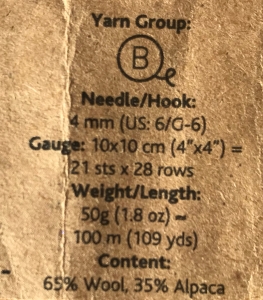
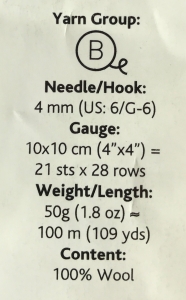
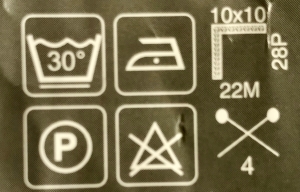
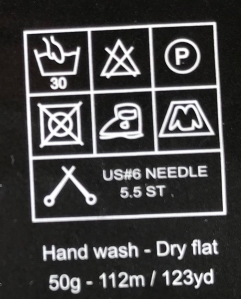
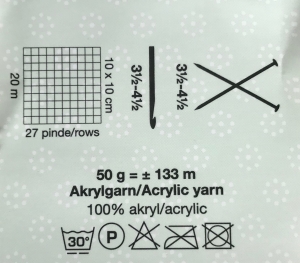
I would advise that you do not mix different qualities of yarn if this is your first project.
Anna’s tips 😉
🧶 Avoid black or very dark yarn in the beginning, at least if you are anywhere near my age and not as sharp-sighted as we used to be 🤓
🧶 Choose plain yarn if you are a beginner. Do not go for mohair or other very fluffy or fancy yarn in the beginning. These yarns may look great and feel nice, but are not the best choice for a beginner who needs to be able to see what s/he is doing.
🧶 There are many different kinds of yarn out there. There are natural fibres (wool, cotton, linen, silk), synthetics (acrylic, polyamide), and half-synthetic yarns (viscose, rayon, bamboo fibres). For most purposes and as a matter of principle I prefer natural fibers. Cotton or wool are wonderful fibres for a throw.
🧶 If you are in a hot climate, cotton is a very good choice. Knitting wool – or worse, acrylic – with sweaty hands is not much fun.
🧶 Acrylic yarn is usually less expensive than wool and is also moth resistant. Given that you will need quite a few skeins for all these patches, price might also be a factor to be considered. So all in all, it may not be a bad choice for your first throw.
🧶 Do make sure to buy a yarn you like. You will be spending a lot of time with it in your hands!
A note on stitch markers
I think I had been knitting happily for 40 years before I even discovered you could buy stitch markers. I would just use a length of scrap yarn. That being said, they are quite convenient, but you don’t have to go out and buy all sorts of accessories before you even know whether you’ll get addicted to knitting 🤓
And you probably have lots of items around the house that can be used: rings and earrings (just make sure they have no snags!), small safety pins, paper clips, the small rings that come with electric toothbrushes or – my personal favourite – the small metal or plastic rings found on bras and swimwear…
So, if you feel you are ready to dive in, click on the button to get started!
